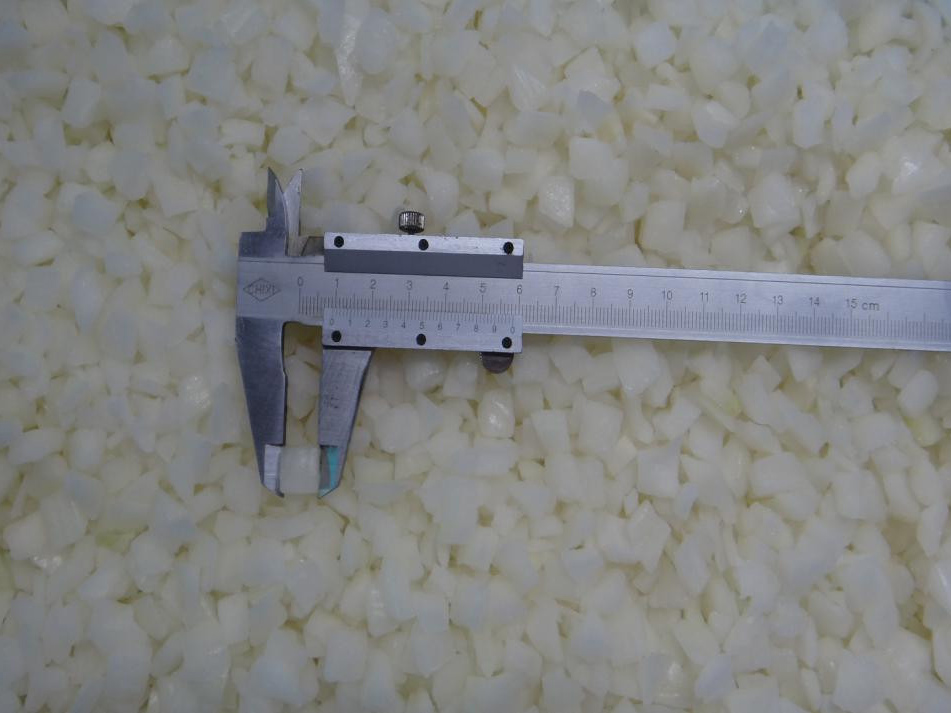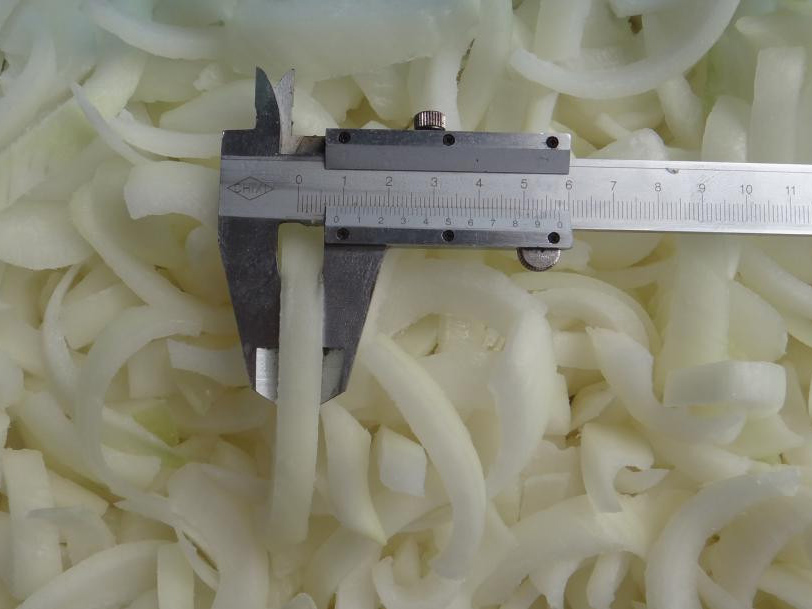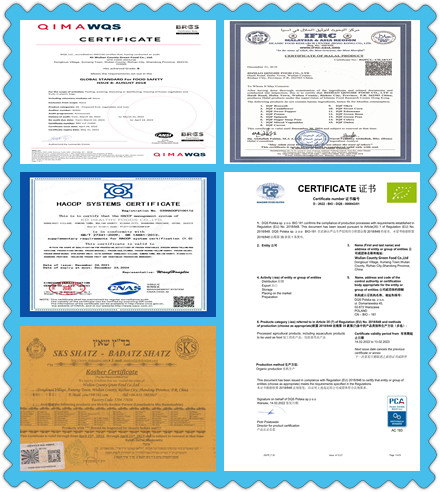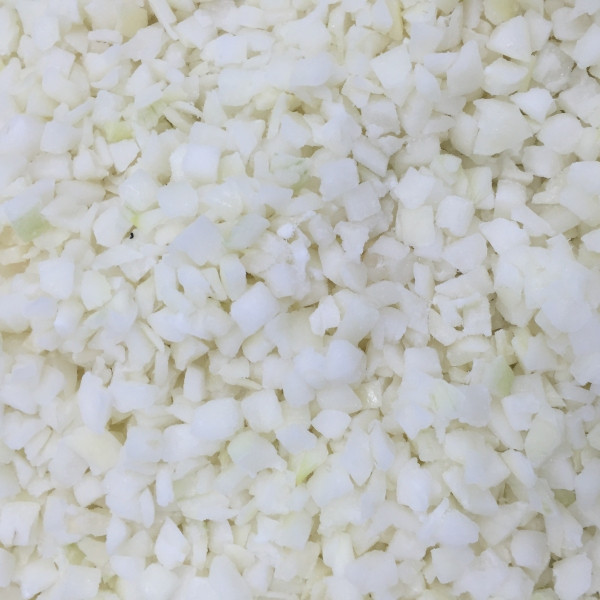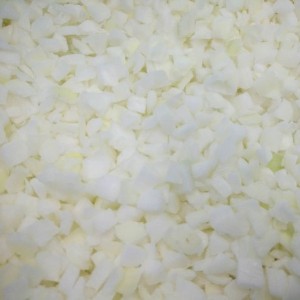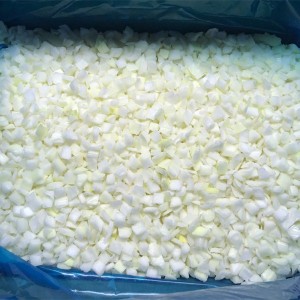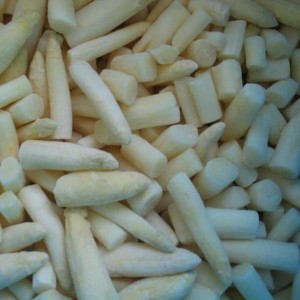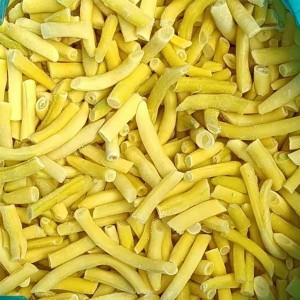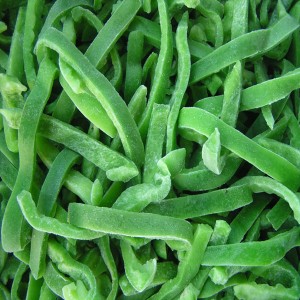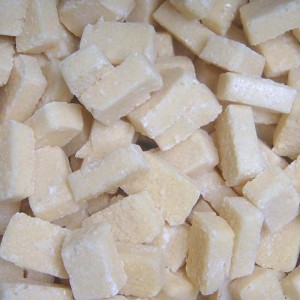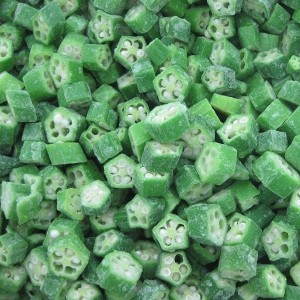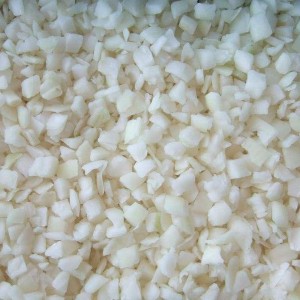IQF Onions Diced
| Description | IQF Onions Diced |
| Type | Frozen, IQF |
| Shape | Diced |
| Size |
Dice: 6*6mm, 10*10mm, 20*20mm or as per customer's requirements |
| Standard | Grade A |
| Season | Feb~May, April~Dec |
| Self-life | 24months under -18°C |
| Packing | Bulk 1×10kg carton, 20lb×1 carton, 1lb×12 carton, Tote, or other retail packing |
| Certificates | HACCP/ISO/KOSHER/FDA/BRC, etc. |
Onions vary in size, shape, color, and flavor. The most common types are red, yellow, and white onions. The taste of these vegetables can range from sweet and juicy to sharp, spicy, and pungent, often depending on the season in which people grow and consume them.
Onions belong to the Allium family of plants, which also includes chives, garlic, and leeks. These vegetables have characteristic pungent flavors and some medicinal properties.
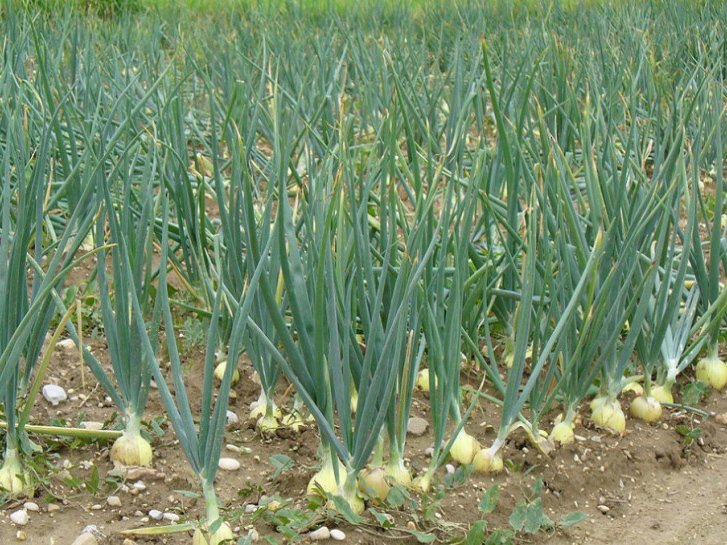
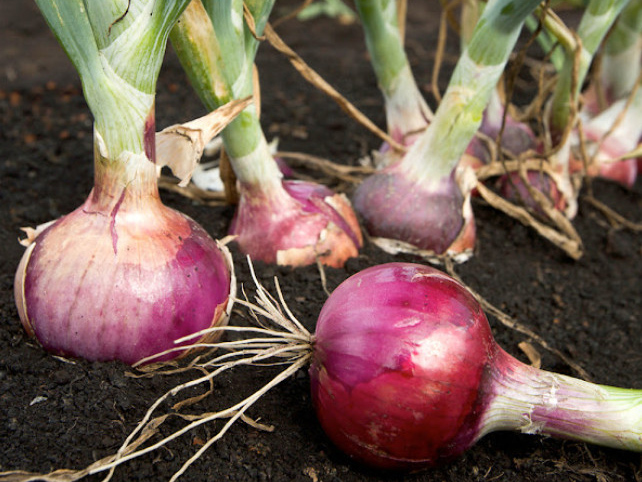
It is common knowledge that chopping onions causes watery eyes. However, onions may also provide potential health benefits.
Onions may have several health benefits, mostly due to their high content of antioxidants and sulfur-containing compounds. Onions have antioxidant and anti-inflammatory effects and have been linked to a reduced risk of cancer, lower blood sugar levels, and improved bone health.
Commonly used as a flavoring or side dish, onions are a staple food in many cuisines. They can be baked, boiled, grilled, fried, roasted, sautéed, powdered, or eaten raw.
Onions can also be consumed when immature, before the bulb reaches full size. They are then called scallions, spring onions, or summer onions.
Onions are a nutrient-dense food, meaning that they are high in vitamins, minerals, and antioxidants while being low in calories.
One cup of chopped onion providesTrusted Source:
· 64 calories
· 14.9 grams (g) of carbohydrate
· 0.16 g of fat
· 0 g of cholesterol
· 2.72 g of fiber
· 6.78 g of sugar
· 1.76 g of protein
Onions also contain small amounts of:
· calcium
· iron
· folate
· magnesium
· phosphorus
· potassium
· the antioxidants quercetin and sulfur
Onions are a good source of the following nutrientsTrusted Source, according to the recommended daily allowance (RDA) and adequate intake (AI) values from the Dietary Guidelines for AmericansTrusted Source:
| Nutrient | Percentage of daily requirement in adults |
| Vitamin C (RDA) | 13.11% for males and 15.73% for females |
| Vitamin B-6 (RDA) | 11.29–14.77%, depending on age |
| Manganese (AI) | 8.96% for males and 11.44% for females |
